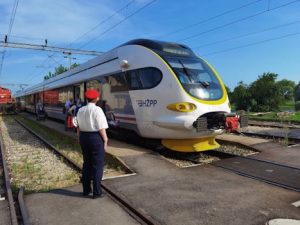Neuromorphic Traffic Management: AI-Driven Urban Flow
With the constant growth of urban populations, traffic management has become a pressing issue for cities all over the world. Traditional traffic control methods have proven to be inefficient and time-consuming, resulting in congestion and longer commute times. However, with the advancements in Artificial Intelligence (AI) and the emergence of neuromorphic computing, a new solution for traffic management has emerged – Neuromorphic Traffic Management: AI-Driven Urban Flow.
The Rise of Neuromorphic Computing
Neuromorphic computing is a technology that mimics the functioning of the human brain, allowing for a more efficient and dynamic approach to problem-solving. With the increase in available data and computing power, neuromorphic computing has become increasingly popular in various industries, including traffic management.
Neuromorphic traffic management uses AI algorithms to analyze and process real-time traffic data from multiple sources, such as cameras, sensors, and GPS devices. The AI then makes decisions, adjusts traffic signals, and adapts traffic flow patterns to optimize the flow of vehicles and reduce congestion.
The Benefits of Neuromorphic Traffic Management
1. Improved Traffic Flow
Traditional traffic management systems rely on fixed timing for traffic signals, which can lead to bottlenecks and increased travel time. Neuromorphic traffic management uses real-time data to adjust traffic signals in response to the flow of vehicles, resulting in a more efficient and smoother traffic flow.
2. Reduced Congestion
Congestion not only results in longer commute times but also has a significant impact on the environment and economy. With AI-driven traffic management, vehicles are better distributed, reducing the number of vehicles on the road and reducing congestion. This leads to improved air quality and decreased fuel consumption, benefiting both the environment and the economy.
3. Enhanced Safety
Neuromorphic traffic management systems use AI algorithms to predict potential accidents and take preventive measures. By monitoring traffic patterns and analyzing potential hazards, the system can alert drivers of potential dangers, reducing the likelihood of accidents.
Real-World Implementation
The implementation of neuromorphic traffic management systems has already shown positive results in cities around the world. In Singapore, the Land Transport Authority has deployed an AI-driven traffic management system that has led to a reduction in travel time by up to 25%. In Shanghai, a similar system has resulted in a 12% decrease in travel time and a 20% reduction in carbon emissions.
Furthermore, the utilization of this technology is not limited to road traffic management. It is also being used in public transportation systems, such as trains and buses, to optimize routes and schedules and improve the overall efficiency of the transit system.
The Road Ahead
As AI technology advances, we can expect to see more cities adopting neuromorphic traffic management systems. With the potential to not only improve traffic flow but also reduce emissions and improve safety, this technology has the potential to revolutionize the way we think about traffic management.
In conclusion, neuromorphic traffic management: AI-driven urban flow is a promising solution to address the growing traffic congestion in cities. By harnessing the power of AI and real-time data, we can create a smarter, more efficient and sustainable urban flow, improving the quality of life for citizens and the environment.











